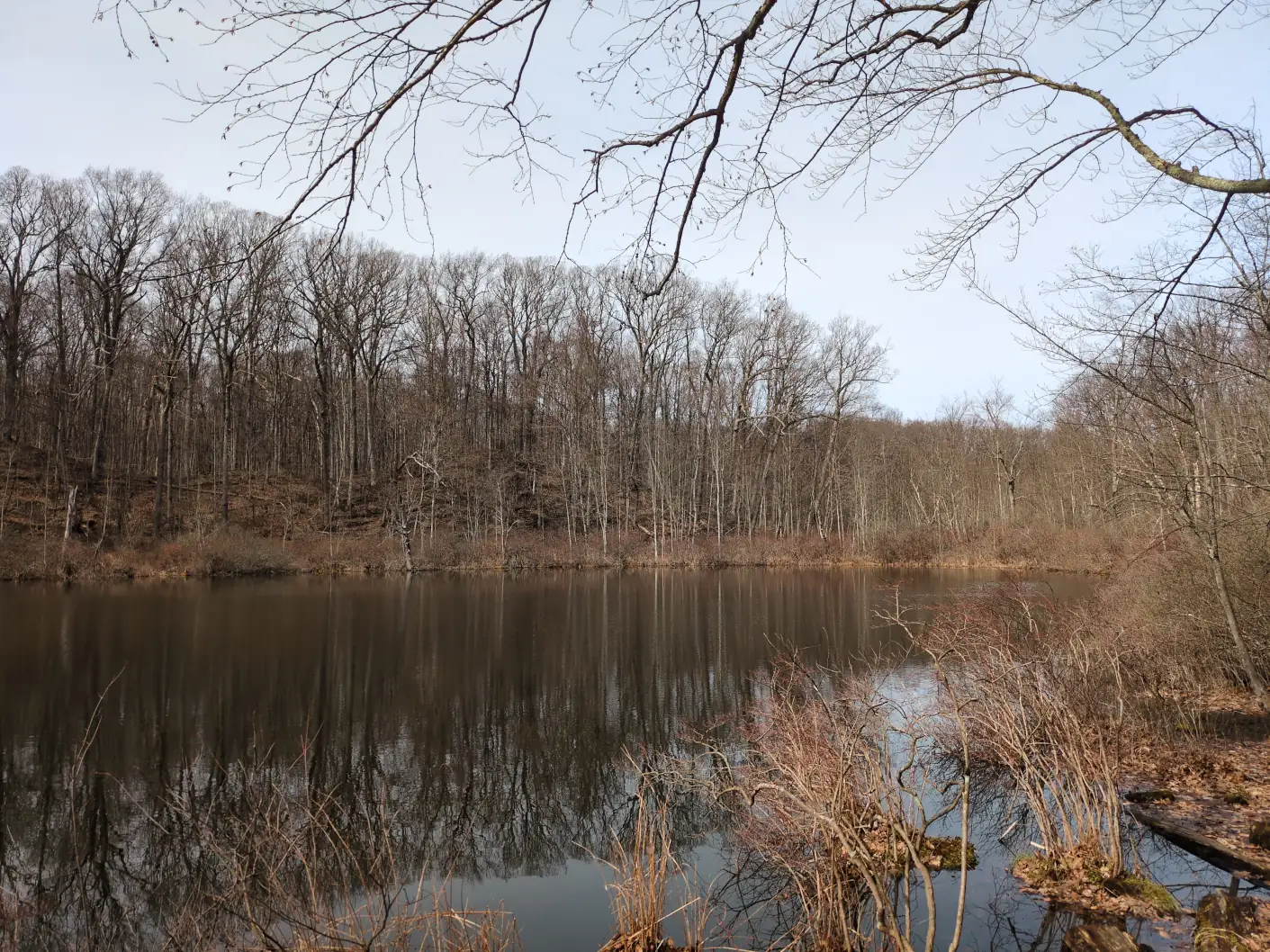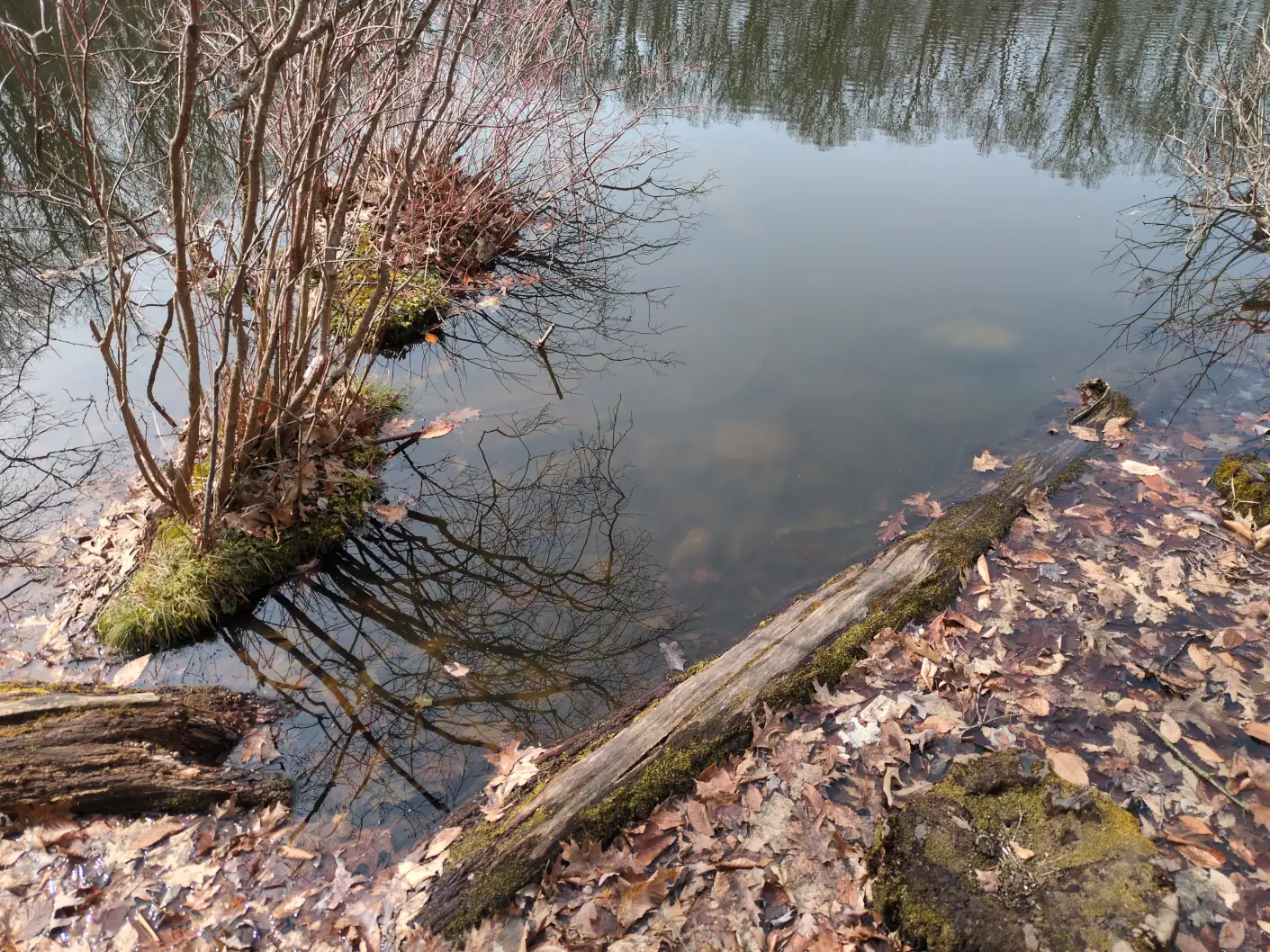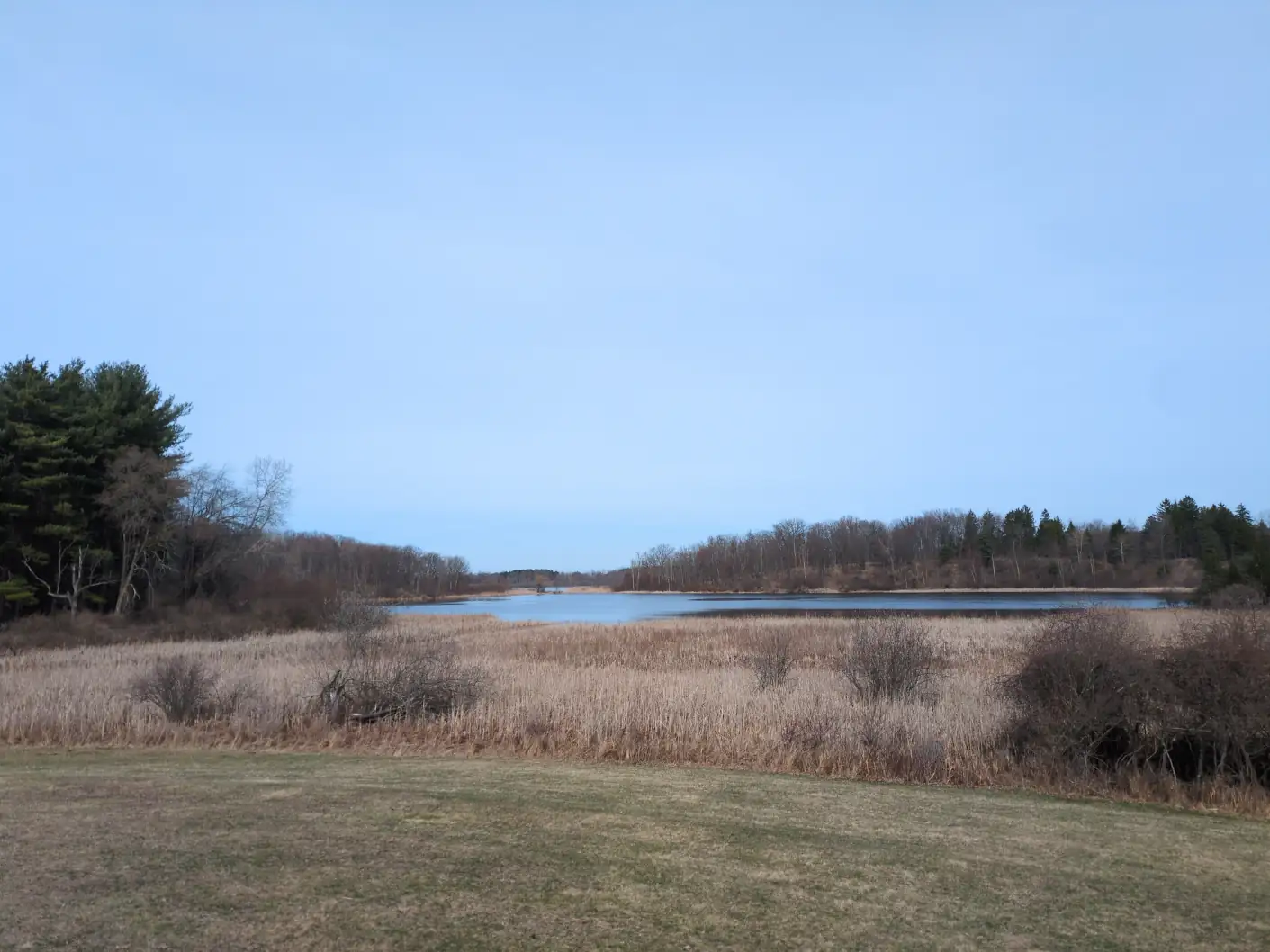Photoblog—Mendon Ponds Park
My partner and I went to Mendon Ponds Park on Sunday. One of the cool things there is the “Devil's Bathtub,” [1] a kettle that (like the rest of the area's geography) appears to be left by a retreating glacier. It's a meromictic body of water — unlike the more common holomictic lakes, the layers of water in a meromictic lake do not mix, creating an oxygen-poor region at the bottom with unusual biology. [2]



The name immediately made me think of Beck's “Devil's Haircut,” and I had ”got a devil's bathtub in my mind” playing in my head the whole walk. ↩︎
”Very few organisms can live in such an oxygen-poor environment. One exception is purple sulfur bacteria. These bacteria, commonly found at the top of the monimolimnion in such lakes, use sulfur compounds such as sulfides in photosynthesis. These compounds are produced by decomposition of organic sediments in oxygen-poor environments. The monimolimnion is often rich in phosphorus and nitrogen. These factors combine to create an ideal environment for bacterial growth.” (Wikipedia) ↩︎
---END OF TRANSMISSION---



Leave a Comment